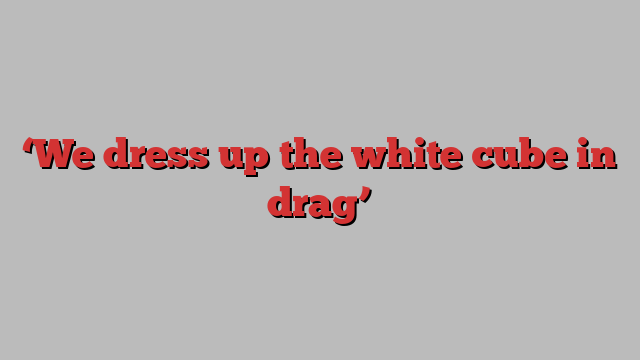
There is a young boy, pale blue from head to toe, hanging upside down in the vast Berlin studio of Elmgreen & Dragset. At first it is surprising to see him, then comic, as you realise he is a sculpture, then unsettling — a range of emotions which the pair’s works, from swimming pools and club nights to a fake Prada store in the desert, have been evoking for the past 30 years.
The boy (later lacquered white) is part of the artists’ new show at the Musée d’Orsay in Paris, which opens next week, but he is not being turned right-way-up there. Indeed, most of the sculptures in the show will also be upside down, suspended from a temporary structure in the grand central sculpture gallery.
“We could have placed them around on the floor,” says Norway-born Ingar Dragset as we sit upstairs in the studio’s airy living space. But hanging them upside down “was us wanting to let the sculptures be in dialogue with existing sculptures, but still not just blend in and disappear”. There is no chance of that: the boy pensively sitting on a washing machine will grab attention, as will the boy peering off the end of a diving board (this one upright), a common motif for Elmgreen & Dragset. It represents “that very existential moment” when you have the choice to jump in or, which might be more courageous, bail out, says Denmark-born Michael Elmgreen.
The pair started working together after they met at a club in Copenhagen in 1994 and discovered they lived in the same building. (They were a couple until 2008.) At first their practice was ephemeral — they unravelled white knitted skirts they were wearing, for example — but once they moved to Berlin in 1997 it developed into something more solid, taking ordinary objects and spaces and making them unfamiliar or, as Dragset says, unheimlich, a German word close to “uncanny” yet more deep-seated. Their first major sculpture, at the Louisiana museum in Denmark, was a diving board, to all appearances a rather normal one, except half the board was sticking out through a window looking out over the sea. Familiar and practical but utterly functionless.
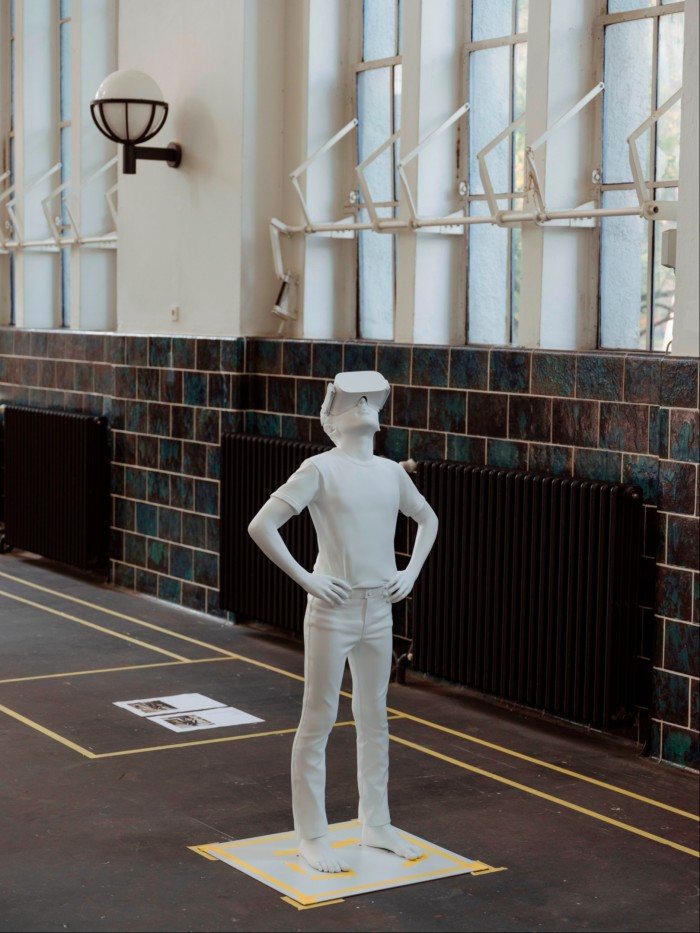
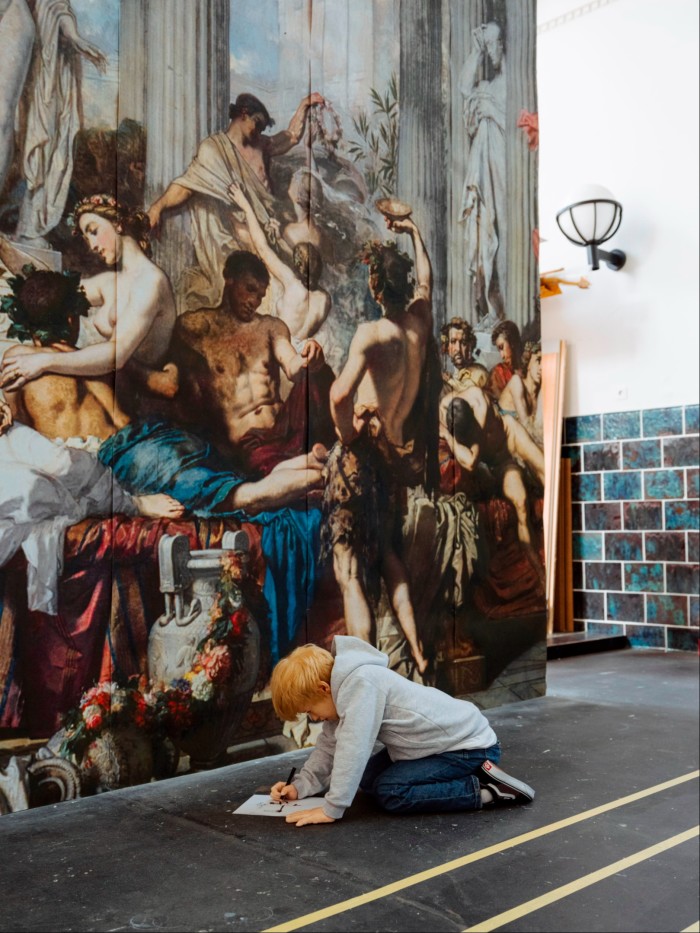
This unsettlement has a greater purpose. When Elmgreen & Dragset installed an empty swimming pool in London’s Whitechapel Gallery, or created an airport in a Seoul museum, or put a hospital hallway complete with patients in beds in Bergen, they were asking us to turn that out-of-place feeling into questions about bigger issues such as the structures of power in our society, who has that power — and how we can alter it.
“In the way we speak of power structures,” says Dragset, “there’s an inherent idea of something being able to change because any structure can morph or transform.” It is a critique which has shaped their sculptural ambitions, especially in an art world they found was “much more rigid, much more conventional and routine-based than we had expected”.
An early part of their work was challenging the generic modern gallery space, whose white walls suggest neutrality but in fact conceal questions of power, money and access. They buried a gallery in the ground so visitors could look in from a (literally and metaphorically) different perspective; they white-painted, hosed down and repainted a gallery’s walls for 12 hours. “We say we dress up the white cube in drag,” says Elmgreen in his slightly gravelly voice. “It temporarily gets another identity in order to perform a different role . . . We want visitors to dare to be a little less respectful, not disrespectful but a little less respectful — ”
“Unafraid — ” adds Dragset.
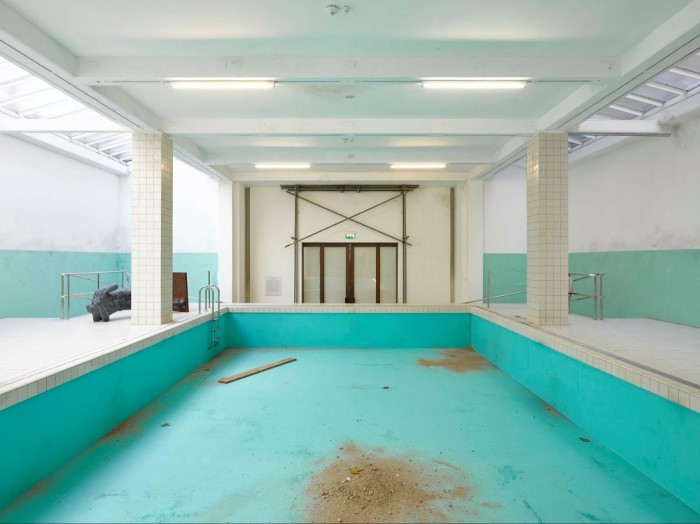
“Fearless. And explore and question when they are in our more immersive installations. At the Whitechapel it was amazing how people were reacting. There were people who claimed that they had been to the swimming pool when the Whitechapel was a swimming pool. It was beautiful. Then you really feel like you’ve done an OK job.” For an installation to be so convincing that people have false memories — the Whitechapel was never a swimming pool — is a new realm for art.
As Elmgreen gets up to close a large window before it rains, I turn to my right and am confronted by an unnerving sight: a lifelike sculpture of a vulture perched on a branch, looking directly at me. “That’s one of the models for this figure we developed called ‘The Critic’,” says Dragset.
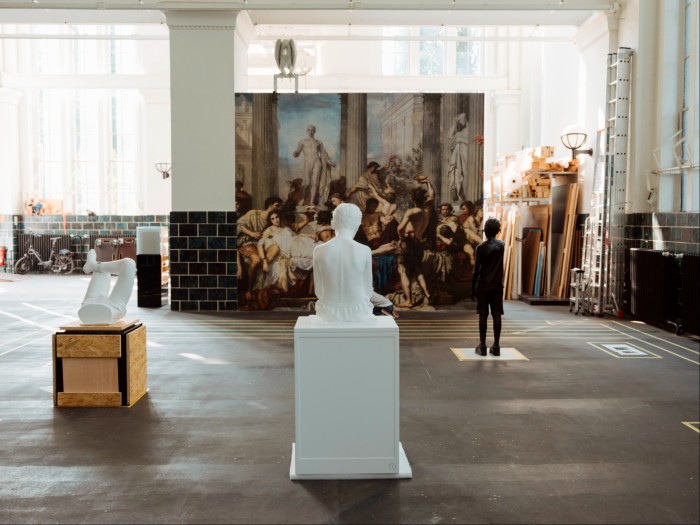
The pair’s institutional critique may seem sombre but is leavened by wit and campness. Their best-known work is “Prada Marfa”, a luxury-goods store recreated in perfect detail, complete with shoes and handbags from the brand’s 2005 autumn/winter collection, which sits by itself on a lonely stretch of Route 90 in the Texan desert. (“There were like 30, 40 people at the opening, mostly local ranchers,” says Elmgreen.) Originally seen largely by those en route to the town of Marfa for minimalist sculptor Donald Judd’s foundation, it gained global renown thanks to appearances in TV series Gossip Girl and The Simpsons; Beyoncé was photographed doing a star-jump in front of it.
“Prada Marfa” has Instagram to thank for becoming a touchstone of contemporary art. Social media “[changed] the identity” of the work, says Elmgreen, but they don’t mind: “Artworks, especially when you place them outside, are like children — at some point they move from home and they take on their own life and you need to accept that.”
“We of course believe that the core idea is strong enough to survive whatever is happening to it,” says Dragset.
“But it is kind of satisfying,” resumes Elmgreen, “that artworks morph beyond your control.” He seems almost delighted that the work has become something beyond their envisaging.
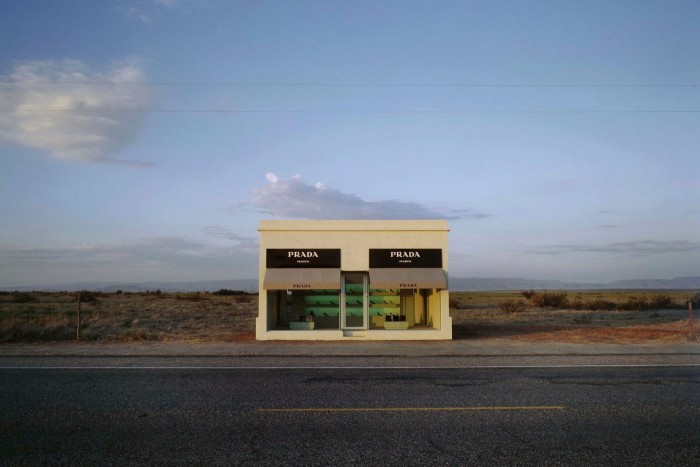
He is slightly less delighted when I read out a quote from a 2002 review, which says — in an apparently supportive way — that Elmgreen & Dragset had staged “a ‘gay infiltration’ of minimalism’s famously macho high aesthetics”. “Minimalism has been infiltrated by queerness from the very start,” Elmgreen says. “I’m sorry, dear heterosexuals, but you can’t trademark minimalism as yours that will [then] be infiltrated by queers . . . You don’t need to accept being boxed in as a queer artist and having certain sets of aesthetics that are provided to you because you are not a heterosexual man.”
Queerness has certainly been a subject for the pair — they staged a gay club night at Victoria Miro gallery in London; a frisson of sex surrounds a sculpture of two pairs of jeans and two pairs of Calvin Klein boxer shorts lying on the floor. But queerness has also been a perspective, says Dragset, a way of looking at society from oblique or unexpected angles.
“Sometimes I have a feeling we haven’t been quite queer enough to be, for instance, included in the most important queer and gay shows in the last 20 years, because our aesthetics have morphed,” he says. “We’re trying out a lot of different things and are harder to pin down maybe than some other artists. But for us that’s also maybe a part of queerness, that you have this way that you’re adapting.”
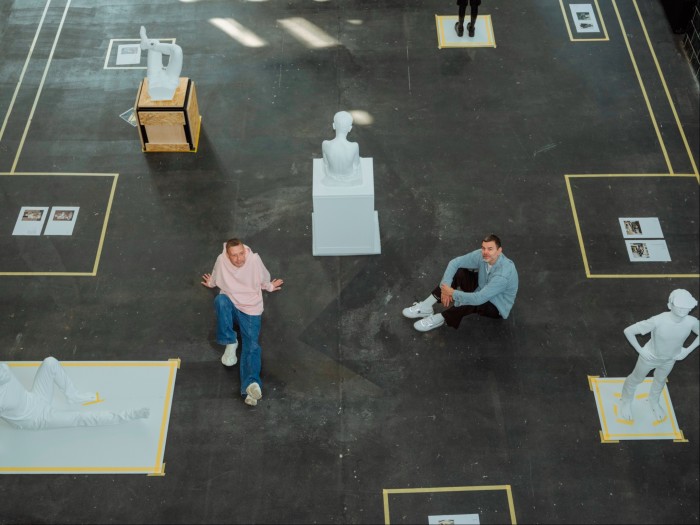
Adaptation goes both ways: as much as Elmgreen & Dragset have changed within the art world, the art world, in its new growth of diverse voices and untold perspectives, has surely changed thanks to them.
October 15-February 2, musee-orsay.fr